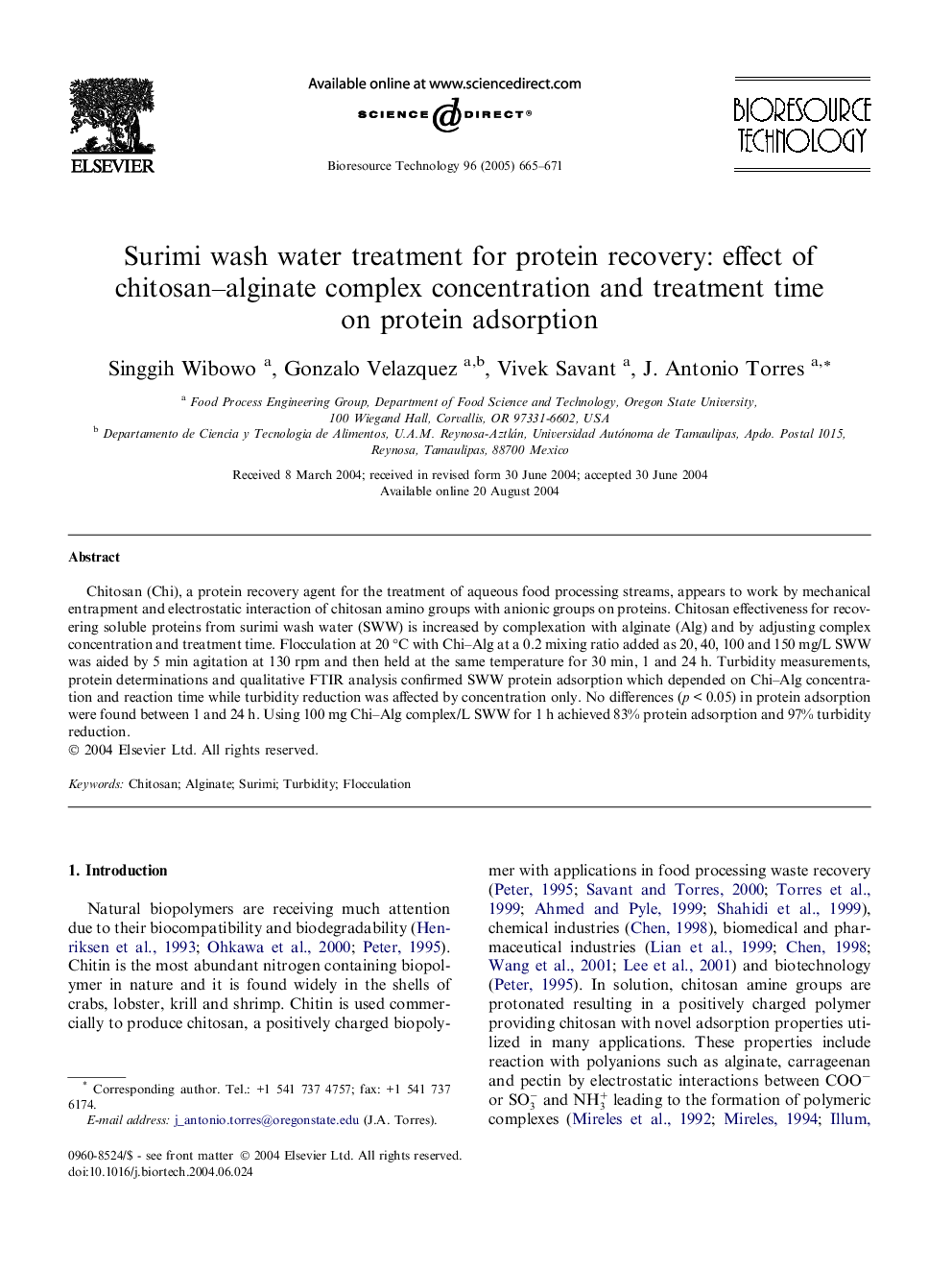| Article ID | Journal | Published Year | Pages | File Type |
|---|---|---|---|---|
| 10395761 | Bioresource Technology | 2005 | 7 Pages |
Abstract
Chitosan (Chi), a protein recovery agent for the treatment of aqueous food processing streams, appears to work by mechanical entrapment and electrostatic interaction of chitosan amino groups with anionic groups on proteins. Chitosan effectiveness for recovering soluble proteins from surimi wash water (SWW) is increased by complexation with alginate (Alg) and by adjusting complex concentration and treatment time. Flocculation at 20 °C with Chi-Alg at a 0.2 mixing ratio added as 20, 40, 100 and 150 mg/L SWW was aided by 5 min agitation at 130 rpm and then held at the same temperature for 30 min, 1 and 24 h. Turbidity measurements, protein determinations and qualitative FTIR analysis confirmed SWW protein adsorption which depended on Chi-Alg concentration and reaction time while turbidity reduction was affected by concentration only. No differences (p < 0.05) in protein adsorption were found between 1 and 24 h. Using 100 mg Chi-Alg complex/L SWW for 1 h achieved 83% protein adsorption and 97% turbidity reduction.
Related Topics
Physical Sciences and Engineering
Chemical Engineering
Process Chemistry and Technology
Authors
Singgih Wibowo, Gonzalo Velazquez, Vivek Savant, J. Antonio Torres,
